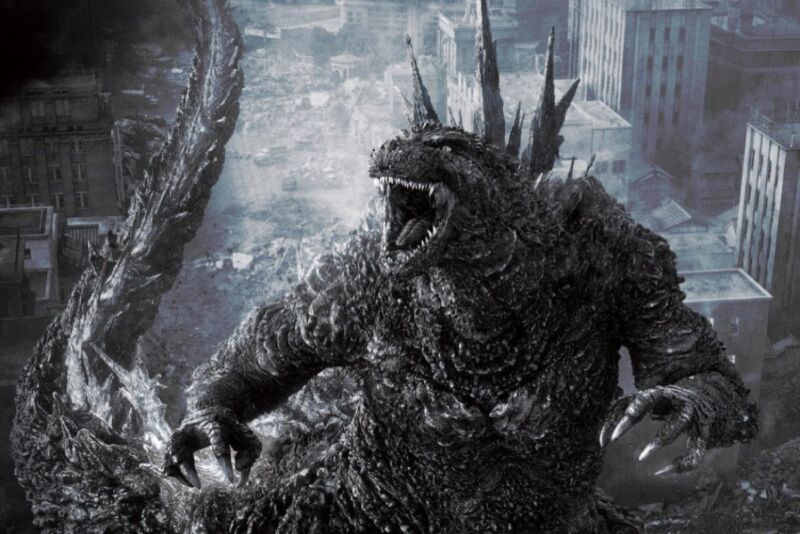A masterful remastering —
“By eliminating color, a new sense of reality emerges.”

Toho Inc.
The critically acclaimed film, Godzilla Minus One, hit US theaters in early December and racked up $51 million in the US alone and over $96 million globally, shooting past 2016’s Shin Godzilla as the most successful Japanese-produced Godzilla film to date. The film is winding down its theatrical run, but director, writer, and VFX supervisor Takashi Yamazaki has remastered a black-and-white version of the film as an homage to the 1954 classic Godzilla, released in Japan last week. And now US audiences will have a chance to see that version when Godzilla Minus One/Minus Color arrives at AMC theaters in the US for a limited run from January 26 through February 1.
(Minor spoilers for Godzilla Minus One below.)
Yamakazi spent three years writing the script for Godzilla Minus One, drawing inspiration not just from the original 1954 film but also Jaws (1975), Godzilla, Mothra and Ghidorah (2001), Shin Godzilla, and the films of Hayao Miyazaki. He opted to set the film in postwar Japan, like the original, rather than more recent events like the Fukushima nuclear accident in 2011, in order to explore themes of postwar trauma and emerging hope. The monster itself was designed to be horrifying, with spiky dorsal fins and a bellowing roar produced by recording an amplified roar in a large stadium.
The plot follows a former WWII kamikaze pilot named Kōichi Shikishima (Ryunosuke Kamiki) who encountered Godzilla in 1945 when the monster attacked a Japanese base on Odo Island, but failed to act to help save the garrison. His parents were killed when Tokyo was bombed, so Shikishima is grappling with serious survivor’s guilt a few years later as he struggles to rebuild his life with a woman named Noriko (Minami Hamabe) and a rescued orphaned baby. Then Godzilla mutates and re-emerges for a renewed attack on Japan, and Shikishima gets the chance to redeem himself by helping to destroy the kaiju.
Godzilla Minus One was received with almost universal critical acclaim, with some declaring it not just one of the best films released in 2023 but possibly one of the best Godzilla films ever made. (We didn’t include the film in our own year’s best list because no Ars staffers had yet seen the film when the list was compiled, but it absolutely merits inclusion.) Among other accolades, the film made the Oscar shortlist for Best Visual Effects.
It was a painstaking process to remaster Godzilla Minus One into black and white. “Rather than just making it monochrome, it is a cut-by-cut,” Yamakazi said in a statement last month. “I had them make adjustments while making full use of various mattes as if they were creating a new movie. What I was aiming for was a style that looked like it was taken by masters of monochrome photography. We were able to unearth the texture of the skin and the details of the scenery that were hidden in the photographed data. Then, a frightening Godzilla, just like the one in the documentary, appeared. By eliminating color, a new sense of reality emerges.”
Godzilla Minus One/Minus Color will have a limited run in US AMC theaters from January 26 through February 1, 2024.